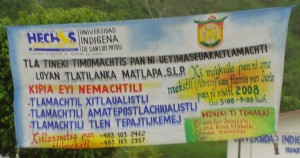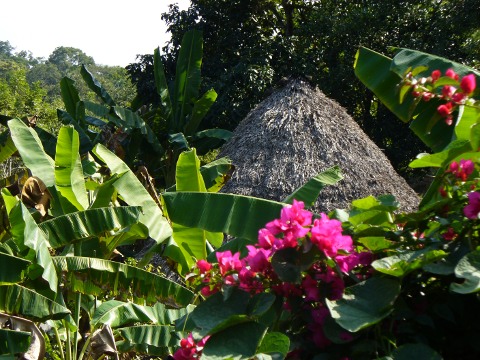
Welcome to the Nahuatl language! This is to be the first in a series of posts on the basics of Nahuatl; a simple effort to make available what I’ve learned since I started studying this language, as there is relatively little information available on the subject, on or off line. I will begin with the alphabet.
Now, the Aztecs had a writing system in place before the Spaniards arrived in North America, but this was not a true phonetic system, and was mainly used to help the reader along with an oration that had already been memorized. When the Spaniards arrived, they brought with them the Roman alphabet, and it wasn’t long before people started using it to write Nahuatl. It worked surprisingly well, but as Spanish was established as the language of New Spain, it never really caught on, and to this day Nahuatl is primarily an oral language.
But the Roman alphabet still works well with Nahuatl, and in the rare case that it is written, it is done with the Roman alphabet. Read More

 Greetings, faithful readers! I have returned to my native continent, and I decided just now to take the time to write up a real live blog post. You see, those photos and short posts from Europe did not freely flow from the fount of creativity, but were the result of assigned writing for one of my classes. This did not detract from their quality entirely; some were quite good in my own estimation, but others were a little forced, and would have gone unwritten were they not assigned. For these latter I apologize, but I hope to improve my habits so that I can have time to write down the things that I am truly inspired by.
Greetings, faithful readers! I have returned to my native continent, and I decided just now to take the time to write up a real live blog post. You see, those photos and short posts from Europe did not freely flow from the fount of creativity, but were the result of assigned writing for one of my classes. This did not detract from their quality entirely; some were quite good in my own estimation, but others were a little forced, and would have gone unwritten were they not assigned. For these latter I apologize, but I hope to improve my habits so that I can have time to write down the things that I am truly inspired by. I recently received in the mail a certain device called a Proclaimer. It is an electronic device manufactured by
I recently received in the mail a certain device called a Proclaimer. It is an electronic device manufactured by